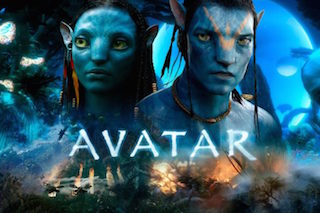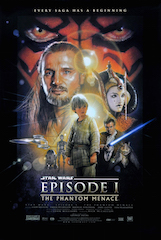NEWS
Digital Cinema’s Second Decade
January 6, 2020
Nick Dager
 Given the state of the motion picture business today it hardly seems possible that in 2010 a significant number of movie theatres were still running film projectors and that many exhibitors were reluctant to make the transition to digital cinema technology. A lot has changed in the past ten years – digital cinema’s second decade – change that was driven almost entirely by new technology. While predicting what the next decade will bring is all but impossible, I feel safe in saying that moving forward the exhibition business will be increasingly interactive, immersive and local. I also feel safe in saying that eSports and content from companies such as Netflix will both play major roles in exhibition before the new decade comes to a close. And China’s role in all of this seems all but certain to get even more complicated. But let’s begin our look back at the past decade with Avatar, the movie that arguably jumpstarted everything.
Given the state of the motion picture business today it hardly seems possible that in 2010 a significant number of movie theatres were still running film projectors and that many exhibitors were reluctant to make the transition to digital cinema technology. A lot has changed in the past ten years – digital cinema’s second decade – change that was driven almost entirely by new technology. While predicting what the next decade will bring is all but impossible, I feel safe in saying that moving forward the exhibition business will be increasingly interactive, immersive and local. I also feel safe in saying that eSports and content from companies such as Netflix will both play major roles in exhibition before the new decade comes to a close. And China’s role in all of this seems all but certain to get even more complicated. But let’s begin our look back at the past decade with Avatar, the movie that arguably jumpstarted everything.
That 2009 blockbuster – until very recently, the biggest box office success in history – was undeniably the catalyst for many exhibitors to finally make the leap and give up film projection.
Of course, the transition began long before 2009; there were ongoing digital cinema technology demonstrations throughout the ‘90s. Most industry observers agree, though, that the transition officially began with the almost simultaneous May 1999 public digital release of Star Wars: Episode 1 – The Phantom Menace on a handful of Texas Instruments DLP projectors and of An Ideal Husband on a few Hughes-JVC DILA projectors. Digital cinema’s first decade had begun. But most observers would also agree that what happened in the decade that followed, happened largely behind the scenes.
That is until Avatar.
That, too, had a back-story. I would make the case that another watershed moment came four years before Avatar in November 2005 with the limited release of Disney’s Chicken Little in digital 3D. At the time, there were only a hundred or so screens across North America equipped for digital 3D. Despite that, and the fact that the movie was widely panned, the film was a box office hit in theatres that could show it in 3D. Those exhibitors added up-charges in some cases double and triple the 2D ticket price. People paid the extra prices willingly and there were reports that many of them saw the movie more than once.
 A proof of concept was born.
A proof of concept was born.
Industry insiders noted the Chicken Little 3D financial windfall. And when they saw the first extended trailers of Avatar, the excitement it generated was palpable. The number of theatres that transitioned to digital began to increase noticeably.
But by the start of the new decade in 2010, and despite the success of Avatar, many exhibitors still balked at the idea of investing in digital cinema technology. So many, in fact, that John Fithian, president of the National Association of Theatre Owners, issued this warning during his state of the industry address at the first CinemaCon in 2011:
“For any exhibitor who can hear my voice who hasn’t begun your digital transition I urge you to get moving. The distribution and exhibition industries achieved history when we agreed to technical standards and a virtual print fee model to enable this transition. But the VPFs won’t last forever. Domestically, you must be installed by the end of 2012 if you want to qualify. Equally significantly based on our assessment of the roll out schedule and our conversations with our distribution partners, I believe that film prints could be unavailable as early as the end of 2013. Simply put if you don’t make the decision to get on the digital train soon you will be making the decision to get out of the business.”
Following Fithian’s admonition, the vast majority of exhibitors finally got down to business and the next few years saw a flurry of digital cinema installations all across North America and around the world. The focus, for the next few years, was largely centered on replacing projectors and modernizing auditoriums.
 Outside the exhibition world a significant development took place in 2012: Netflix began to produce original content, starting with the series Lilyhammer. The company had begun streaming in 2010 and, prior to Lilyhammer, had only carried content from other companies, the majority of which was TV series. Even with the advent of Lilyhammer, though, few people at the time seemed to take Netflix seriously as competition for the Hollywood studios or movie theatres.
Outside the exhibition world a significant development took place in 2012: Netflix began to produce original content, starting with the series Lilyhammer. The company had begun streaming in 2010 and, prior to Lilyhammer, had only carried content from other companies, the majority of which was TV series. Even with the advent of Lilyhammer, though, few people at the time seemed to take Netflix seriously as competition for the Hollywood studios or movie theatres.
By 2015 the transition was all but complete. For me, 2015 was the year things really got interesting because, as people were beginning to understand, the completion of the transition was not the end of anything; it was the real beginning of the digital cinema era. And at that year’s CinemaCon it was obvious that manufacturers – and their most savvy customers – were ready to explore all the possibilities that digital cinema technology could provide.
That year Digital Cinema Report debuted the Catalyst Awards, which were created to showcase the best new technology introductions at the conference; and 2015 turned out to be a banner year for technology.
That was the year that CJ 4DPlex unveiled ScreenX, its innovative concept that envelopes movie audiences with screens on three sides of the auditorium. It was also the year that Dolby launched Dolby Cinema, featuring Dolby Atmos sound and Dolby Vision projection in custom-designed auditoriums; Dolby Cinema puts the premium in the Premium Large Format category.
 That CinemaCon also featured one of my personal favorites: CineCardz. With CineCardz, a customer simply uses the dedicated website for the standard ticket purchasing process and, for an additional twenty dollars, uploads a message that is converted to a 30-second animated digital cinema package. That DCP is then sent electronically to the relevant cinema and automatically inserted into the right place in the pre-show playlist. One CineCardz slot is available for each scheduled screening at participating cinemas. And for exhibitors using Arts Alliance Media's Theatre Management System Screenwriter, CineCardz is free. Think of all the kids who get wished a happy birthday on the big screen.
That CinemaCon also featured one of my personal favorites: CineCardz. With CineCardz, a customer simply uses the dedicated website for the standard ticket purchasing process and, for an additional twenty dollars, uploads a message that is converted to a 30-second animated digital cinema package. That DCP is then sent electronically to the relevant cinema and automatically inserted into the right place in the pre-show playlist. One CineCardz slot is available for each scheduled screening at participating cinemas. And for exhibitors using Arts Alliance Media's Theatre Management System Screenwriter, CineCardz is free. Think of all the kids who get wished a happy birthday on the big screen.
By 2017 manufacturers were increasingly beginning to consider possibilities outside the main auditorium. Understanding that exhibitors are always looking for new ways to generate revenue, Barco unveiled its Augmented Reality Lobby Display. Picture a framed movie poster in a theatre lobby. Barco placed a small digital camera atop that frame and created an app for the feature film displayed. Once a patron downloads that app and points a Smartphone or tablet at the poster, one of the characters from the movie appears in the space between the patron and the poster. The patron can then take photos of that character with her friends and family.
That year the Ymagis Group introduced ÉclairColor, its digital high dynamic range color system that combines a mastering process and the optimization of select projection system technologies readily available through another Ymagis company, CinemaNext. The company also debuted ÉclairPlay, a platform where content owners and cinema exhibitors (in particular, art house and independent exhibitors) can negotiate the terms of sales and rental agreements. The platform also offers activity dashboards accessible from anywhere with real-time tracking of deliveries and intelligent reporting to measure and maximize business.
 In 2018 – possibly signaling a significant industry change – the industry as a whole got its first look at Samsung’s Onyx Cinema LED Screen. With the 4K model earning validation as the world’s first Digital Cinema Initiatives-certified theatre display, the Samsung Onyx translates the combination of advanced LED and high dynamic range picture quality into lifelike big screen content.
In 2018 – possibly signaling a significant industry change – the industry as a whole got its first look at Samsung’s Onyx Cinema LED Screen. With the 4K model earning validation as the world’s first Digital Cinema Initiatives-certified theatre display, the Samsung Onyx translates the combination of advanced LED and high dynamic range picture quality into lifelike big screen content.
Last year’s biggest technology highlight, and one signaling the chance of an even bigger industry transformation, was the Catalyst Award-winning Cinity Cinema System, a joint effort between the Huaxia Film Distribution Company, Christie Digital Systems and GDC Technology to “develop, leverage and promote premium format movies driven by new, advanced configurations.”
The companies behind the Cinity Cinema System – all Asian – have staked a leadership position in the future of motion pictures at a time when a leader is sorely lacking. Hollywood has made it clear for some time that it has no interest in paying for any more advancements in cinema technology, while at the same time insisting that its subsidiary, the Digital Cinema Initiative, still decide what technology gets market acceptance. This dichotomy has contributed to the current chaotic state that everyone involved in motion pictures must deal with every day. That includes filmmakers, distributors, exhibitors and manufacturers.
The Cinity Cinema System combines a variety of advanced technologies such as 4K, 3D, high frame rate, high dynamic range, wide color gamut and immersive sound to deliver the highest specifications and best possible movie presentation in the movie projection era.
 While we still haven’t seen the full impact of the Cinity Cinema System, the first film to use it has been released. Three-time Academy Award-winning filmmaker Ang Lee’s much anticipated film, Paramount Pictures' Gemini Man premiered October 6 at the TCL Chinese Theatre in Los Angeles using the Cinity Cinema System based on two Christie CP4450-RGB HFR projectors.
While we still haven’t seen the full impact of the Cinity Cinema System, the first film to use it has been released. Three-time Academy Award-winning filmmaker Ang Lee’s much anticipated film, Paramount Pictures' Gemini Man premiered October 6 at the TCL Chinese Theatre in Los Angeles using the Cinity Cinema System based on two Christie CP4450-RGB HFR projectors.
As has been the case with Lee’s most recent work, the film stretches technological boundaries by being produced in 4K resolution, stereoscopic 3D, and shot at 120 frames per second. Many people did not like the look of the film. New York Times film critic A.O. Scott said, “the hyper-clarity of the images undermines realism rather than enhancing it.” That Gemini Man was a critical and box office disappointment has to be seen as a setback for the Cinity Cinema System. How the companies involved respond will be one of the big stories to watch in 2020.
Finally, it’s somehow fitting that the decade ended with Disney’s entry into the streaming arena with the November launch of Disney+. How that studio works (or doesn’t work) with exhibitors will be something to watch closely in the coming months. With Netflix, Amazon Prime, Apple TV+ and others producing Oscar caliber content such as Roma, Marriage Story and The Irishman, there seems to be little doubt that the streaming companies and exhibitors will eventually reach some sort of deal regarding release windows. What that deal will look like is anybody’s guess but, given the box office domination that Disney has enjoyed in recent years, don’t bet against the Mouse.
Read More:
https://www.digitalcinemareport.com/article/digital-cinema%E2%80%99s-second-decade#.XhN6LxdKhUR

 then "Add to Home Screen"
then "Add to Home Screen"